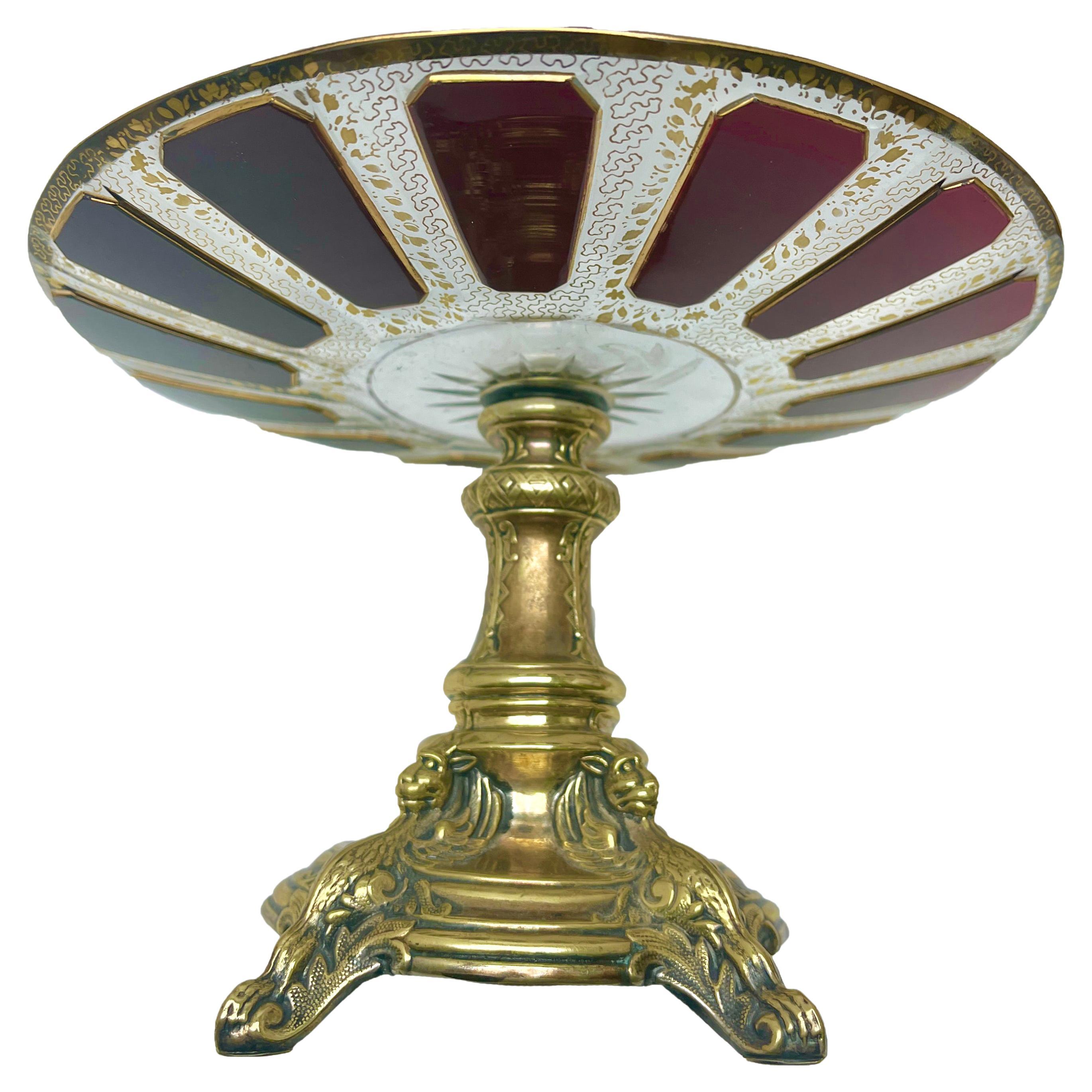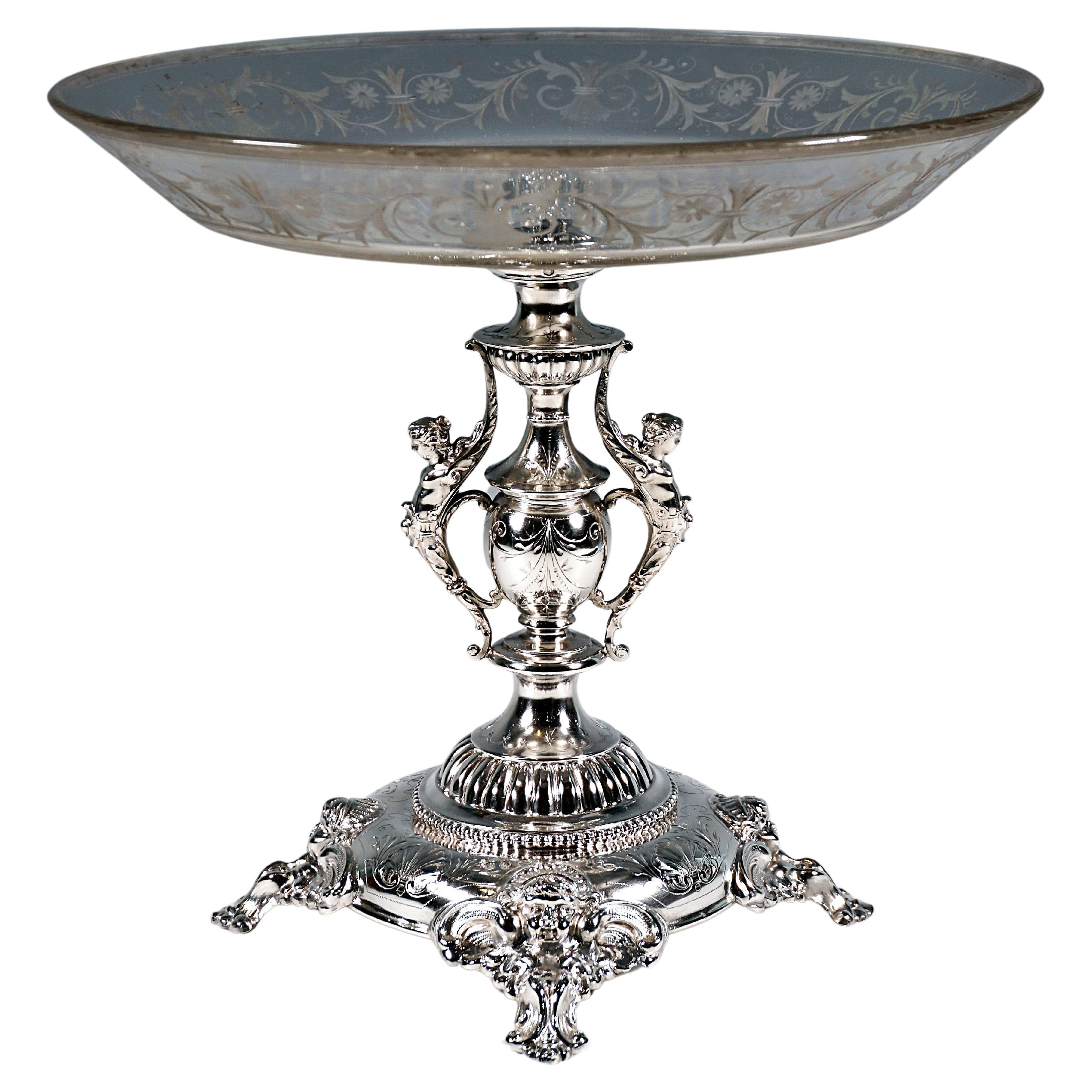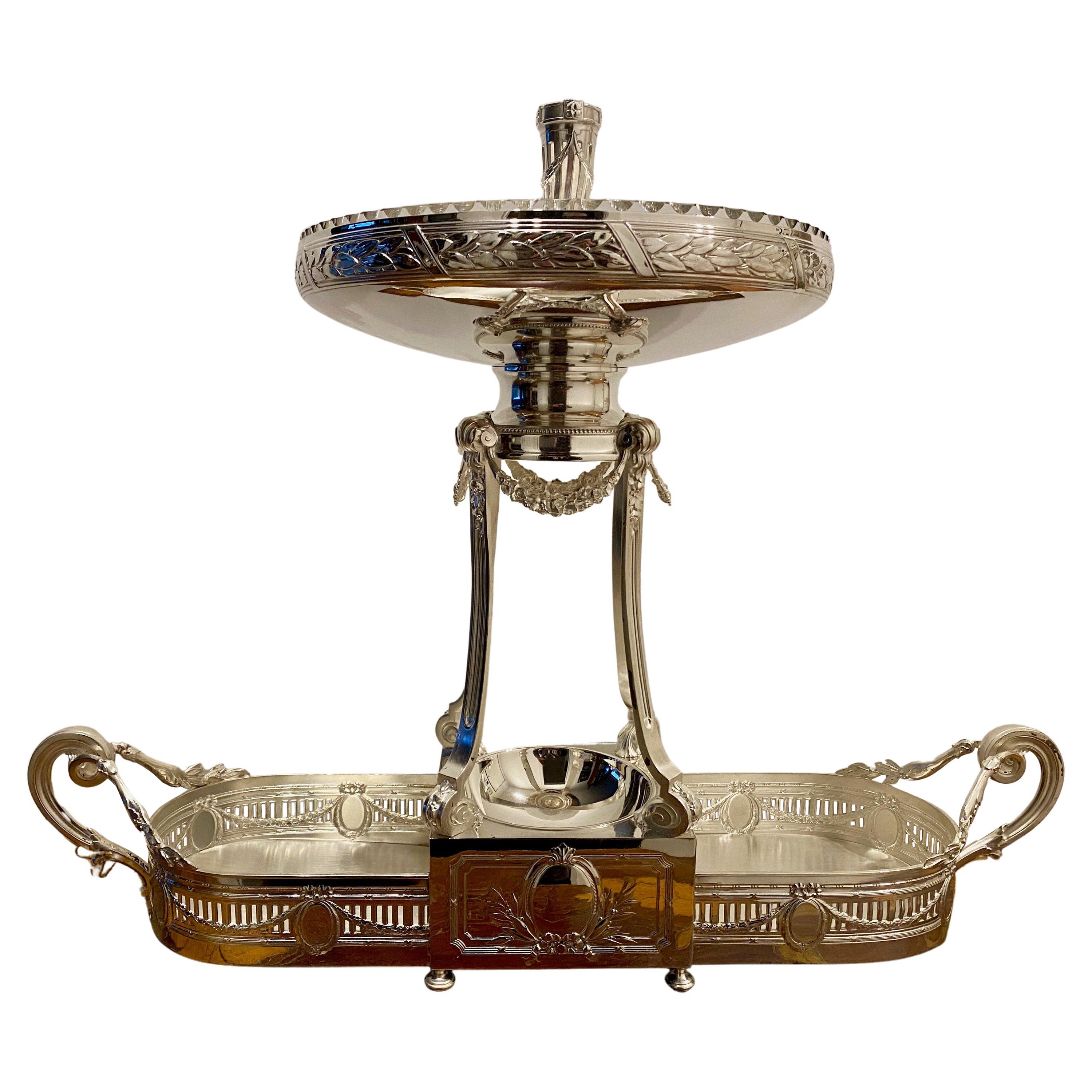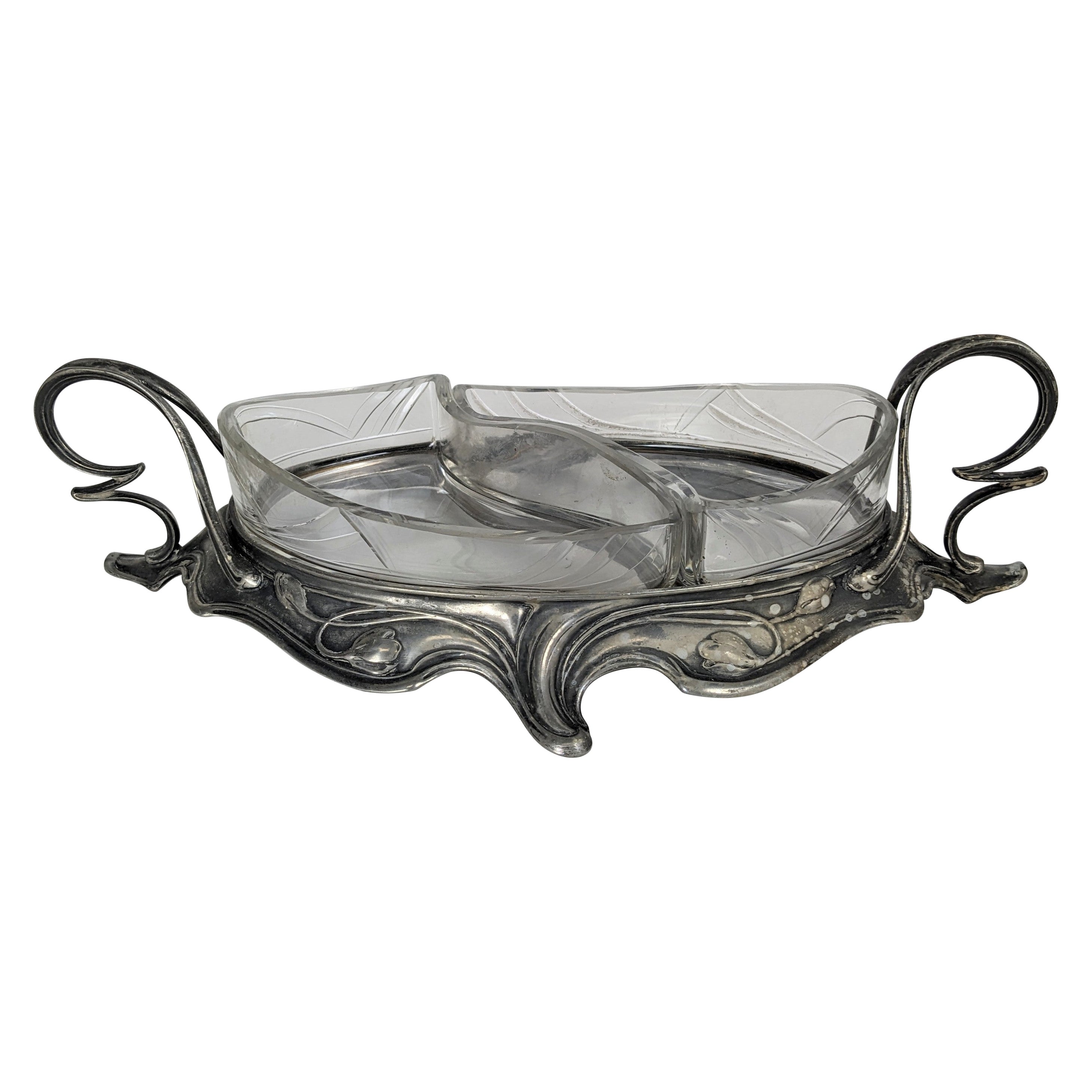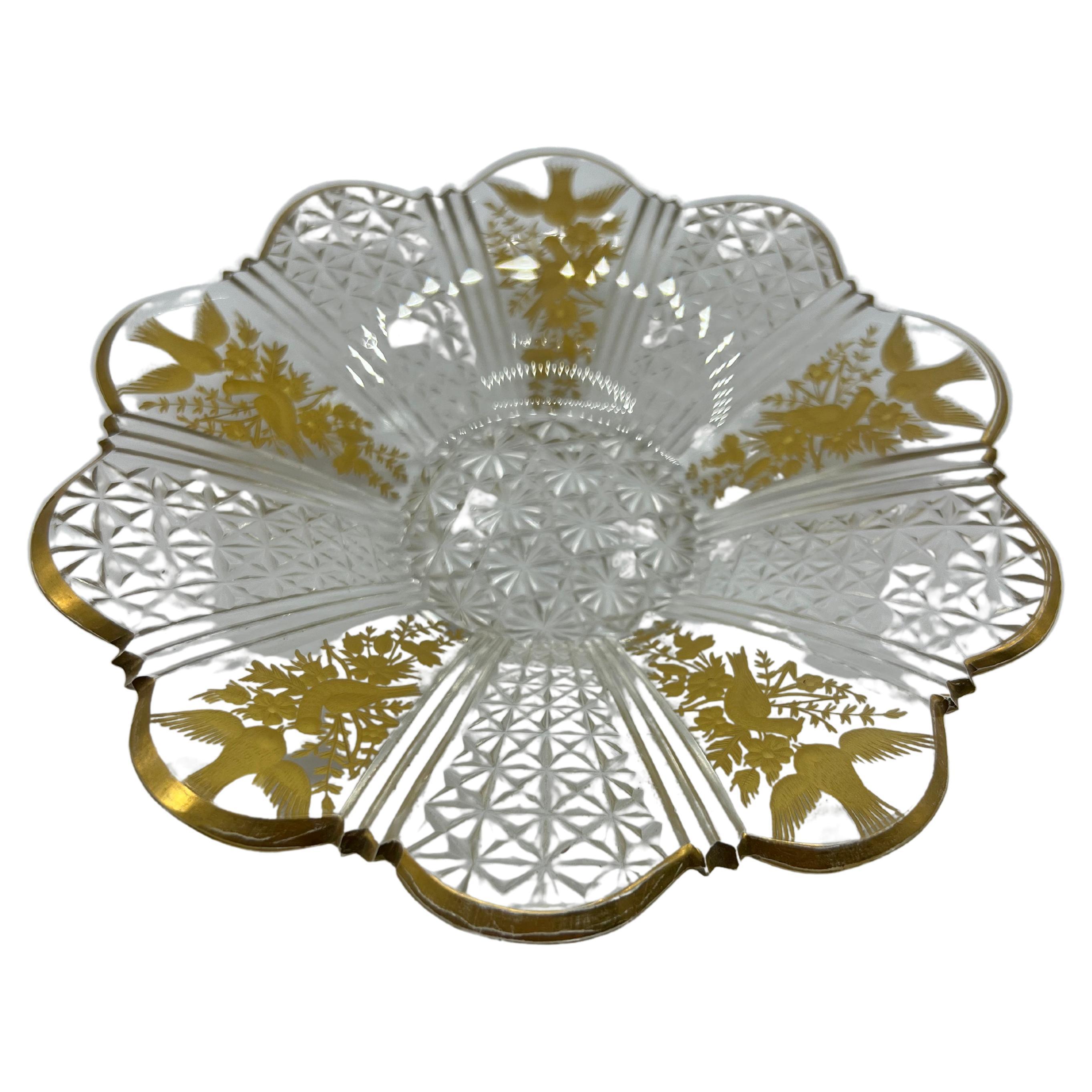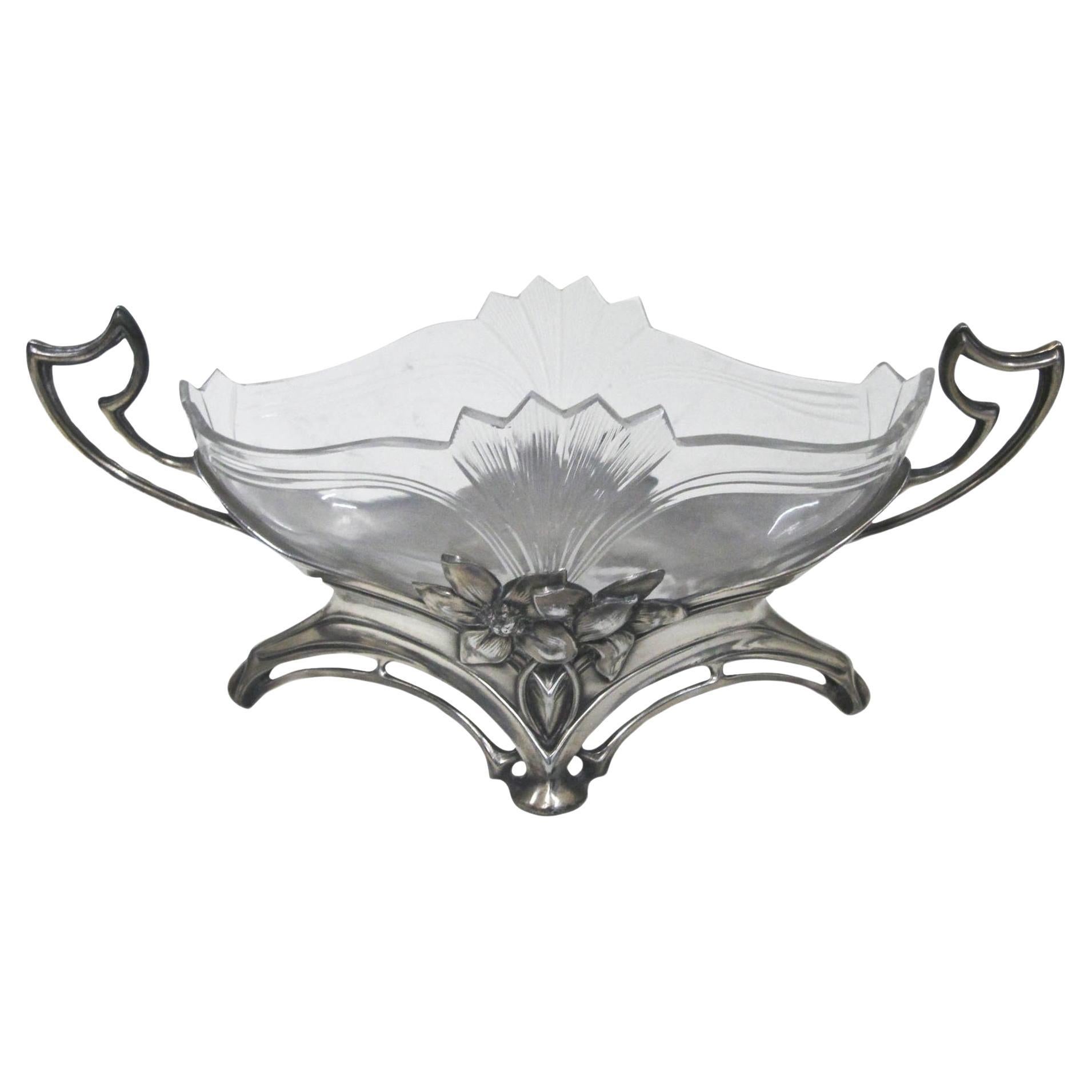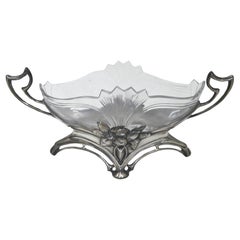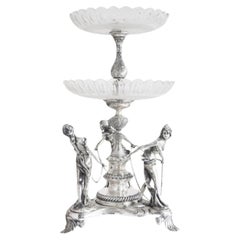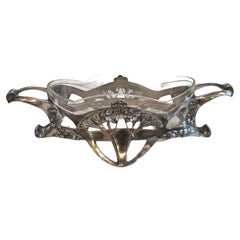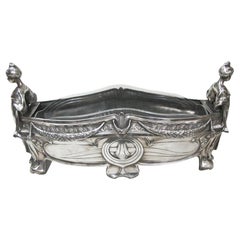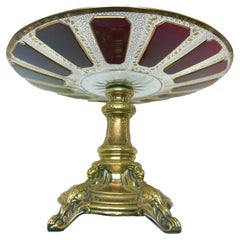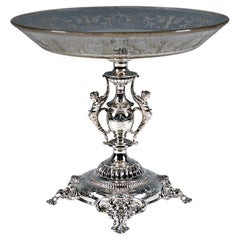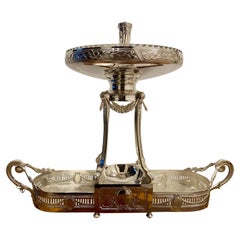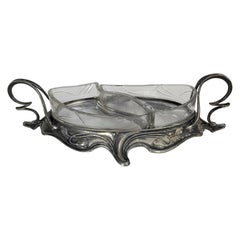Artículos similares a Muffin plate, Art nouveau, Jugendstil, Moderismo, Liberty, Stile Floreale, 1900
Cargando vídeo
¿Quieres más imágenes o vídeos?
Solicita imágenes o vídeos adicionales al vendedor
1 de 22
Muffin plate, Art nouveau, Jugendstil, Moderismo, Liberty, Stile Floreale, 1900
6984,11 €
Acerca del artículo
Muffin plate,
Sign: 30
Sign: 28907
Material: Silver plated metal
Style: Art nouveau, Jugendstil, Moderismo, Liberty, Stile Floreale, 1900
If you want to live in the golden years, this is the bar that your project needs.
We have specialized in the sale of Art Deco and Art Nouveau and Vintage styles since 1982.If you have any questions we are at your disposal.
Pushing the button that reads 'View All From Seller'. And you can see more objects to the style for sale.
Why are there so many antiques in Argentina?
In the 1880 – 1940 there was a grate wave of immigration encouraged by the periods of war that were taking place.
1st World War took place between 1914 and 1918
2nd World War took place between 1939 and 1945
The immigrants options were New York or Buenos Aires. Tickets were cheap and in Buenos Aires they were welcomed with open arms, as it was a country where everything was still to be done.
Argentina was the country of new opportunities, labour was needed and religious freedom was assured, in many cases the of the family travel first until they were settled and then the rest of the family members join them.
In the immigrant museum “Ellis Island Immigrant Building” in New York you can se the promotional posters of the boats that would take them to a new life.
Between the years 1895 and 1896, Argentina had the highest DGP (gross domestic product) per capita in the world according to the Maddison Historical Statistics index, this situation arose due to the large amount of food being exported to European countries, which were at war.
The Argentinean ships left the port of Buenos Aires with food, but they returned with furniture, clothes and construction elements, (it´s common to see this the old buildings of the historic neighbourhood of San Telmo, the beams with the inscription “Made in England)”, as well as many markets that were built in Buenos Aires, such us the San Telmo Market, whose structure was brought by ship and afterwards assembled in 900 Defensa Street.
With the great influence of European immigrants living in the country, the children of the upper classes travelled to study in France, resulting in the inauguration of “La Maison Argentinienne”, on 27th of June 1928, in the international city of Paris, which hosted many Argentinians that were studying in Frace.
It´s the fourth house to be built after France, Canada and Belgium, being the first Spanish-speaking one. Still in place today (17 Bd Jourdan, 75014, Paris, France). Many of the children of these wealthy families who attended international art exhibitions, museums and art courses abroad, took a keen interest in the European style. This is why Buenos Aires was at the time referred as “The Paris of South America”.
Between the years 1890 and 1920 more than a hundred Palaces were built on Alvear Avenue the most exclusive avenue in Buenos Aires. Today some of these palaces have been transformed into museums, hotels and embassies.
In the year 1936, the Kavanagh building was inaugurated, it was the tallest reinforced concrete building in South America.
During 1994 the American Society of Civil Engineers distinguished it as an “international engineering milestone”, and it´s now considered a World Heritage of Modern Architecture.
At the time was common to hire foreign architects such as Le Corbusier, who visited Buenos Aires/Argentina in 1929 and in 1948 he drew up the blueprints for a house built in La Plata City (which was declared a World Heritage Site).
In 1947, the Hungarian architect Marcelo Breuer designed “Parador Ariston” in the seaside city of Mar del Plata. After an Argentinean student at Harvard University convinced him to come to Argentina. He worked on an urban development project in the Casa Amarilla, area of La Boca.
The Ukrainian architect, Vladimiro Acosta, arrives in Argentina in 1928 and worked as an architect until que moved to Brazil.
Antonio Bonet, a Spanish architect who worked with Le Corbusier in Paris, arrives in Argentina in 1937, where he carried out several architectural works and in 1938 designs the well-known BFK chair.
Andres Kálnay, of Hungarian origin, made around 120 architectural masterpieces, among which the former Munich brewery stands out, he even made the furniture’s design.
The German architect, Walter Gropius, director of the Bauhaus, lived in Argentina, where he wrote articles for “Sur” magazine and founded in Buenos Aires, an architectural firm with Franz Möller, who was also an architect, where he built two houses.
At the same time several famous designers decided to immigrate to Argentina, among them we can find the well-known French designer, Jean-Michel Frank, who arrived in the country in 1940 and also worked for the Rockefeller family.
Special pieces were made, which were sold exclusively in the country, such as the well-known German company “WMF”, who sold their products by catalogue, which were chosen by the ladies of high society in the list of wedding gifts, as well as the pieces designed by Christofle.
The Swiss sculptor Alberto Giacometti, made special pieces for Argentinean mansions.
In 1904 the first Jansen branch outside Paris was established in Buenos Aires, as the Argentinean clientele demanded a large amount of furniture, from the end of the 19th century to the mid-20th century.
In 1970, the brand Rigolleau Argentina made pieces authorised by Lalique.
The brands Maple and Thompson also set up shop in the country.
The French plastic artist, Marcel Duchamp moved to Argentina in 1918-1919.
Glass signed Gallé, Charder, Leverre, Schneider, Muller and other French firms. They were bought in flower shops and were given to ladies with beautiful floral arrangements.
Some furniture manufacturers travelled to international fairs and bough the patterns to produce the furniture in Argentina, such as the furniture firm Englander and Bonta, who bought the patterns ins Italy.
It is worth mentioning that in Argentina we have the largest community of Italians outside of Italy, as it is estimated that 70 percent of the inhabitants have at least one Italian descendant, followed by Spanish immigrants.
The most Important furniture stores in Argentina:
Comte is founded in 1934 (under the direct management of Jean Michel Frank in 1940).
Nordiska (Swedish company established in 1934).
Churba in 1960, a company that brought foreign designers to present their furniture in the country:
Denmark: (Arne Jacobsen, Finn Juhl, Bender Madsen, Ejner Larsen, Poul Kjaerholm, Hans Wegner)
Sweden: (Hans Agne Jakobsson, Gustavsberg)
United States: (Herman Miller)
Finland: (Lisa Johansson, Folke Arstrom, Tapio Wirkkala, Alvar Aalto, Timo Sarpaneva)
Swedish Factory: (Orrefors)
Italy: (Littala, Vico Magistretti, Emma Gismondi, Gae Aulenti, Angelo Mangiarotti, Elio Martinelli, Gianna Celada, Angelo Mangiarotti, Mario Bellini, Carlo Scarpa)
Finland: (Olivia Toikka)
Plata Lappas (Lappas Silver): a goldsmith shop founded in 1887 in Argentina by Alcibiades Lappas of Greek origin.
In 2019, in Argentina took place “the Art Deco world congress”, in which we participated as hosts invited by Geo Darder, founder of the Copperbridge – Foundation, in which prominent people from all over the world attended to learn about Art Deco in Argentina.
Argentina currently has more than 100 Art Deco buildings and another 90 Art Nouveau buildings throughout the city of Buenos Aires.
Argentina is a country that has not been involved in many wars, which is why it has been a refuge for works of art and antiques from different periods of time, unlike European countries. That is way many collectors, museums and antique dealers from all over the world visit it, you should not miss the opportunity to visit this great country.
Laura Guevara Kjuder, architect.
- Dimensiones:Altura: 43 cm (16,93 in)Diámetro: 25,5 cm (10,04 in)
- Estilo:Art Nouveau (En el estilo de)
- Materiales y técnicas:
- Lugar de origen:
- Época:
- Fecha de fabricación:1900
- Estado:Desgaste acorde con la edad y el uso.
- Ubicación del vendedor:Ciudad Autónoma Buenos Aires, AR
- Número de referencia:1stDibs: LU6785245349232
Sobre el vendedor
5,0
Vendedor profesional aprobado
Todos los vendedores superan estrictas normas de autenticidad y confiabilidad
Establecido en 1982
Vendedor de 1stDibs desde 2022
37 ventas en 1stDibs
Tiempo de respuesta usual: <1 hora
- EnvíoRecuperando presupuesto…Envío desde: Ciudad Autónoma Buenos Aires, Argentina
- Política de devolución
Partes de esta página se han traducido automáticamente. 1stDibs no puede garantizar la exactitud de las traducciones. El inglés es el idioma predeterminado de este sitio web.
Garantía de autenticidad
En el improbable caso de que haya algún problema con la autenticidad de un artículo, ponte en contacto con nosotros en un plazo de 1 año para recibir un reembolso total. DetallesGarantía de devolución de dinero
Si tu artículo no es como se describe, sufre daños durante el transporte o no llega, ponte en contacto con nosotros en un plazo de 7 días para recibir un reembolso total. DetallesCancelación dentro de las 24 horas
Tienes un período de gracia de 24 horas para reconsiderar tu compra, sin preguntas.Vendedores profesionales aprobados
Nuestros vendedores de primera clase deben cumplir estrictos estándares de servicio para mantener la integridad de nuestros anuncios.Garantía de igualación de precios
Si encuentras que un vendedor publicó el mismo artículo por un precio menor en otro lado, igualaremos ese precio.Entrega global de confianza
Nuestra red de transporte de primera ofrece opciones de envío especializado en todo el mundo, que incluye envío personalizado.Más de este vendedor
Ver todoCentro de mesa WMF, Alemán, Jugendstil, Art Nouveau, Libertad, 1900, Numerado 457
Por WMF Württembergische Metallwarenfabrik
Centerplace, WMF, Alemán
Página 98 del libro WMF (Art Nouveau Metalistería Doméstica de la Wurttembergische Metallwaren Fabrik)
WMF (Wurttembergische Metallwarenfabrik)
La empresa El...
Categoría
Antiguo, Principios del 1900, Alemán, Art Nouveau, Centros de mesa
Materiales
Cristal, Metal
Centro de mesa WMF, Alemán, Jugendstil, Art Nouveau, Libertad, 1900, Numerado 457
Por WMF Württembergische Metallwarenfabrik
Centerplace, WMF, Alemán
WMF G: introducida el 1 de junio de 1910, con el fin de mejorar la legibilidad, especialmente de las marcas muy pequeñas. La empresa la elección del avestru...
Categoría
Antiguo, Principios del 1900, Alemán, Art Nouveau, Centros de mesa
Materiales
Cristal, Metal
Centro de mesa, Art Nouveau, Libertad, Alemán, 1910, WMF
Por WMF Württembergische Metallwarenfabrik
Centerplace, WMF
Estamos especializados en la venta de Art Decó y Art Nouveau y estilos Vintage desde 1982.Si tiene alguna pregunta estamos a su disposición.
Pulsando el botón qu...
Categoría
Vintage, Década de 1910, Alemán, Art Nouveau, Centros de mesa
Materiales
Cristal, Metal
Centro de mesa, Jugendstil, Art Nouveau, Libertad, Alemán, 1900, WMF
Por WMF Württembergische Metallwarenfabrik
Centerplace, wmf, alemán
Estamos especializados en la venta de Art Decó y Art Nouveau y estilos Vintage desde 1982.Si tiene alguna pregunta estamos a su disposición.
Pulsando el ...
Categoría
Antiguo, Principios del 1900, Alemán, Art Nouveau, Centros de mesa
Materiales
Cristal, Metal
Centro de mesa, Jugendstil, Art Nouveau, Francia, 1900
Centerplace
Metal: Chapado en plata y cristal
Estamos especializados en la venta de Art Decó y Art Nouveau y estilos Vintage desde 1982. Si tiene alguna pregunta, estamos a su di...
Categoría
Antiguo, Principios del 1900, Francés, Art Nouveau, Centros de mesa
Materiales
Metal
Centro de mesa, Francia, Jugendstil, Art Nouveau, Libertad, 1900
Centerplace
En bronce plateado
Estamos especializados en la venta de Art Decó y Art Nouveau y estilos Vintage desde 1982. Si tiene alguna pregunta, estamos a su disposición.
Pulsando...
Categoría
Antiguo, Principios del 1900, Francés, Art Nouveau, Centros de mesa
Materiales
Bronce
También te puede gustar
Centro de mesa Art Nouveau Atribuido a Kayser en Alemania, hacia 1900
Por Kayser Germany
Espectacular centro de mesa Art Nouveau atribuido a Kayser Germany, hacia 1900.
Muy impresionante, esta asombrosa pieza reúne toda la excelencia de la época Art Nouveau en término...
Categoría
Antiguo, Principios del 1900, Alemán, Art Nouveau, Centros de mesa
Materiales
Chapado en plata
Centro de mesa vienés Art Nouveau de plata con cuenco de cristal original, Alrededor de 1900
Por Vincenz Carl Dub 1
Elegante centro de mesa de plata sobre una base redonda curvada de varios escalones con cuatro pies cuadrados de rocaille con cabezas de putti en relieve, decoración de conchas y flo...
Categoría
Antiguo, Principios del 1900, Austríaco, Art Nouveau, Plata esterlina
Materiales
Silver
Centro de mesa francés Art Nouveau plateado "Epergne", Ca. 1900
Centro de mesa francés Art Nouveau plateado "Epergne", Ca. 1900.
Categoría
Antiguo, Principios del 1900, Francés, Art Nouveau, Centros de mesa
Materiales
Chapado en plata
Plato para servir de plata Art Nouveau
Elegante Plato para Servir de Platería Art Nouveau de origen europeo circa 1900.Cada una de las 2 mamparas de cristal grabado se extraen para su limpieza y siguen las líneas ondulada...
Categoría
Antiguo, Principios del 1900, Europeo, Art Nouveau, Cuencos para servir
Materiales
Chapado en plata
Placa Art Nouveau, Corte Fino, Bohemia, Dorado
Plato Art Nouveau, corte fino, Bohemia, Austria, dorado, juego de cuatro platos, motivo de pájaros, buen estado.
Categoría
Antiguo, Principios del 1900, Cristalería
Materiales
Cristal
588 € artículo
Rara Tazza Orivit Art Nouveau firmada en metal y cristal tallado c1900
Por Orivit
Fabulosa Tazza de metal y cristal tallado firmada por Orivit en un estado excepcional. La base es de un sinuoso metal dorado de estilo Art Nouveau, con un remate en forma de flor para sujetar la tapa de cristal. Está firmada Orivit 2259 en la base, que data de alrededor de 1900. La parte superior es de cristal incoloro transparente con un borde ondulado y cortado con ramas y hojas.
Orivit A.G. Colonia-Ehrenfeld y Braunfels. Provincia del Rin o Prusia renana, Prusia (actual Renania del Norte-Westfalia)
Silberschmied / Plateros
La empresa fue fundada en 1894 como "Rheinische Broncegiesserei für Kleinplastiken " en Colonia-Ehrenfeld por Wilhelm Ferdinand Hubert Schmitz (n.1863 - d.1939).
A partir de 1896 empezaron a fabricar artículos de lujo en una nueva aleación, "Orivit Metal", compuesta por un 89,85% de estaño, un 7,9% de antimonio, un 1,9% de cobre y un 0,12% de plata.
En 1900 la fábrica cambió su nombre por el de "Orivit A.G. fur Kunsthandwerkliche Metalwarenfabrikation" y en 1901/02 se construyó una nueva fábrica en Cöln- Braunfels,
con una nueva y revolucionaria prensa hidráulica Huber Presverfahren, capaz de producir 3.650 kilopondios por centímetro cuadrado.
Al encontrarse en dificultades financieras, Orovit A.G fue adquirida en 1905 por Württembergische MetallwarenFabrik.
En 1906, Orivit A.G. adquirió Orion y 60 de sus diseños se incorporaron a la gama Orivit. Las marcas W/MF se utilizaron a partir de 1907,
aunque las marcas de Orivit aún eran visibles en los moldes antiguos.Los diseñadores fueron Carl Sigmund Luber Hermann Gradl...
Categoría
Antiguo, Principios del 1900, Alemán, Art Nouveau, Cuencos decorativos
Materiales
Metal
